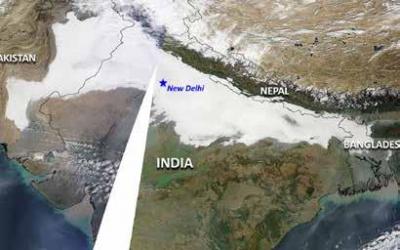
Each year during the winter season (December-January), dense fog engulfs the Indo-Gangetic Plains (IGP) in South Asia, extending over a stretch of 1500 km, for more than a month disrupting day-to-day life of millions of people living in the IGP. Increasing air pollution combined with sufficient moisture available due to the passage of frequent north-westerlies favor fog formation in this region. Trends in poor visibility suggest a significant increase in worsening air quality and foggy days over the IGP. The persistent and widespread nature of the winter fog is strongly influenced by the regional meteorology during winter time, i.e., a stable boundary layer, cold temperatures, high relative humidity, and light winds. The valley type topography of the IGP, adjacent to the towering Himalaya, and high concentrations of pollution aerosols, further favors the persistence of hazy or fog conditions.
At IIT Bombay, we have developed day-time and night-time algorithms to detect and characterise the presence of fog using optical and thermal satellite remote sensing measurements. Further, we are extending our algorithm development to geostationary satellites, for providing continuous monitoring of the spatial-temporal variation of fog.
The outputs of fog detection algorithm and related products are operationally disseminated via monitoring system comprises of automated data transfer and processing architecture, which includes fetching and processing of multi-dimensional and complex satellite data for fog-relevant feature detection, as well as the online dissemination of products. Ongoing and future efforts include integration of satellite-based fog products with geospatial layers and query functionalities related to air and rail transportation. We anticipate that the ongoing and future development of a fog monitoring system would be of assistance to air, rail and vehicular transportation management, as well as for dissemination of fog information to government agencies and general public.
Prof. Ritesh Gautam
